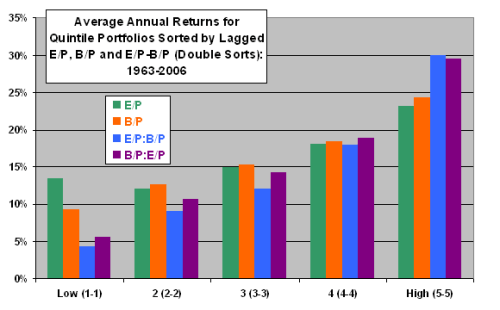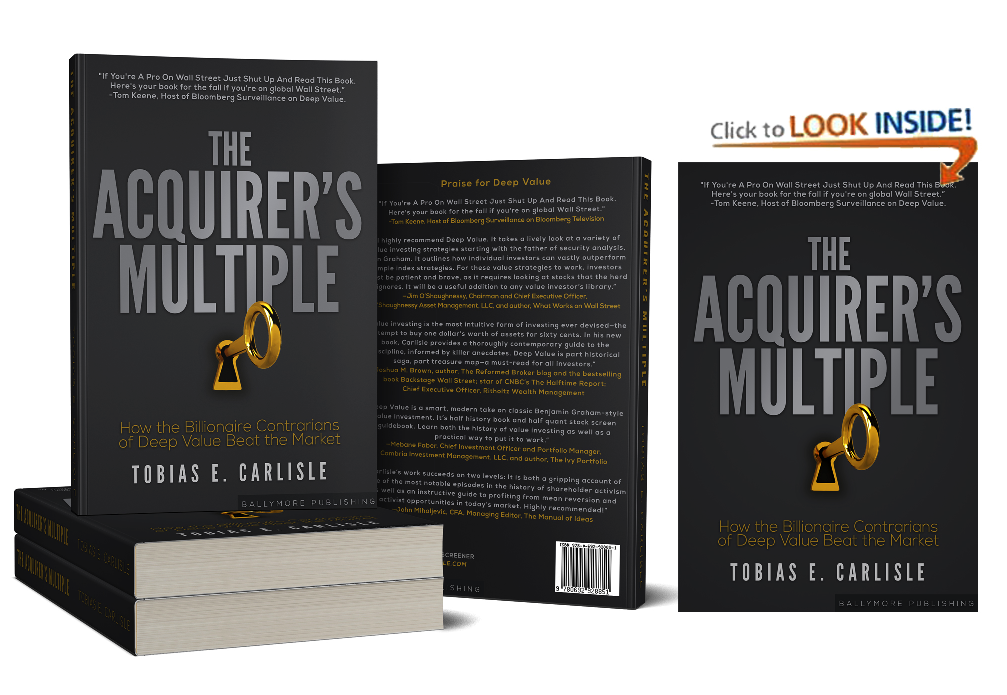Seth Klarman’s teachings, which I’ve covered on this site on several occasions (see, for example, Klarman on calculating liquidation value, on identifying catalysts, and on investing in liquidations), are always worth reading. In his most recent investor letter Klarman has provided a list of twenty investment lessons of 2008 (via the always superb Zero Hedge):
- Things that have never happened before are bound to occur with some regularity. You must always be prepared for the unexpected, including sudden, sharp downward swings in markets and the economy. Whatever adverse scenario you can contemplate, reality can be far worse.
- When excesses such as lax lending standards become widespread and persist for some time, people are lulled into a false sense of security, creating an even more dangerous situation. In some cases, excesses migrate beyond regional or national borders, raising the ante for investors and governments. These excesses will eventually end, triggering a crisis at least in proportion to the degree of the excesses. Correlations between asset classes may be surprisingly high when leverage rapidly unwinds.
- Nowhere does it say that investors should strive to make every last dollar of potential profit; consideration of risk must never take a backseat to return. Conservative positioning entering a crisis is crucial: it enables one to maintain long-term oriented, clear thinking, and to focus on new opportunities while others are distracted or even forced to sell. Portfolio hedges must be in place before a crisis hits. One cannot reliably or affordably increase or replace hedges that are rolling off during a financial crisis.
- Risk is not inherent in an investment; it is always relative to the price paid. Uncertainty is not the same as risk. Indeed, when great uncertainty – such as in the fall of 2008 – drives securities prices to especially low levels, they often become less risky investments.
- Do not trust financial market risk models. Reality is always too complex to be accurately modeled. Attention to risk must be a 24/7/365 obsession, with people – not computers – assessing and reassessing the risk environment in real time. Despite the predilection of some analysts to model the financial markets using sophisticated mathematics, the markets are governed by behavioral science, not physical science.
- Do not accept principal risk while investing short-term cash: the greedy effort to earn a few extra basis points of yield inevitably leads to the incurrence of greater risk, which increases the likelihood of losses and severe illiquidity at precisely the moment when cash is needed to cover expenses, to meet commitments, or to make compelling long-term investments.
- The latest trade of a security creates a dangerous illusion that its market price approximates its true value. This mirage is especially dangerous during periods of market exuberance. The concept of “private market value” as an anchor to the proper valuation of a business can also be greatly skewed during ebullient times and should always be considered with a healthy degree of skepticism.
- A broad and flexible investment approach is essential during a crisis. Opportunities can be vast, ephemeral, and dispersed through various sectors and markets. Rigid silos can be an enormous disadvantage at such times.
- You must buy on the way down. There is far more volume on the way down than on the way back up, and far less competition among buyers. It is almost always better to be too early than too late, but you must be prepared for price markdowns on what you buy.
- Financial innovation can be highly dangerous, though almost no one will tell you this. New financial products are typically created for sunny days and are almost never stress-tested for stormy weather. Securitization is an area that almost perfectly fits this description; markets for securitized assets such as subprime mortgages completely collapsed in 2008 and have not fully recovered. Ironically, the government is eager to restore the securitization markets back to their pre-collapse stature.
- Ratings agencies are highly conflicted, unimaginative dupes. They are blissfully unaware of adverse selection and moral hazard. Investors should never trust them.
- Be sure that you are well compensated for illiquidity – especially illiquidity without control – because it can create particularly high opportunity costs.
- At equal returns, public investments are generally superior to private investments not only because they are more liquid but also because amidst distress, public markets are more likely than private ones to offer attractive opportunities to average down.
- Beware leverage in all its forms. Borrowers – individual, corporate, or government – should always match fund their liabilities against the duration of their assets. Borrowers must always remember that capital markets can be extremely fickle, and that it is never safe to assume a maturing loan can be rolled over. Even if you are unleveraged, the leverage employed by others can drive dramatic price and valuation swings; sudden unavailability of leverage in the economy may trigger an economic downturn.
- Many LBOs are man-made disasters. When the price paid is excessive, the equity portion of an LBO is really an out-of-the-money call option. Many fiduciaries placed large amounts of the capital under their stewardship into such options in 2006 and 2007.
- Financial stocks are particularly risky. Banking, in particular, is a highly lever- aged, extremely competitive, and challenging business. A major European bank recently announced the goal of achieving a 20% return on equity (ROE) within several years. Unfortunately, ROE is highly dependent on absolute yields, yield spreads, maintaining adequate loan loss reserves, and the amount of leverage used. What is the bank’s management to do if it cannot readily get to 20%? Leverage up? Hold riskier assets? Ignore the risk of loss? In some ways, for a major financial institution even to have a ROE goal is to court disaster.
- Having clients with a long-term orientation is crucial. Nothing else is as important to the success of an investment firm.
- When a government official says a problem has been “contained,” pay no attention.
- The government – the ultimate short- term-oriented player – cannot with- stand much pain in the economy or the financial markets. Bailouts and rescues are likely to occur, though not with sufficient predictability for investors to comfortably take advantage. The government will take enormous risks in such interventions, especially if the expenses can be conveniently deferred to the future. Some of the price-tag is in the form of back- stops and guarantees, whose cost is almost impossible to determine.
- Almost no one will accept responsibility for his or her role in precipitating a crisis: not leveraged speculators, not willfully blind leaders of financial institutions, and certainly not regulators, government officials, ratings agencies or politicians.
See also Klarman’s False Lessons of 2009.


